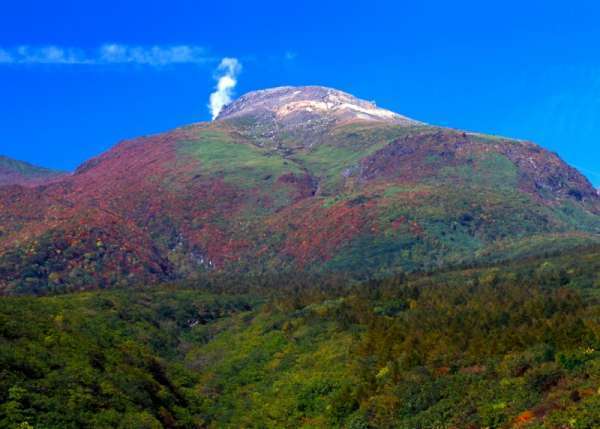Tochigi features an array of nature, interesting attractions, and some great day trip ideas. Under two hours from Tokyo, it makes the perfect destination for a one or two day trip from the capital. There is so much to do in the area, that you will be spoilt for choice during your travels around Tochigi:
1. Ashikaga Flower Park

Ashikaga Flower Park which has become famous for its wisteria blooms has more than 350 wisteria trees on its huge 92000㎡ grounds. The year is divided into 8 seasons with a floral theme which begins with winter peony in early January, so that flowering plants such as wisteria, hydrangeas, irises and flowers can be enjoyed all throughout the year. During this time, the Giant Wisteria Festival which takes place from late April to May is popular, attracting more than 500,000 people annually. Designated by the prefecture as a Natural Monument, the 80m-long white wisteria tunnel and the 3 giant multilayered wisteria trellises that cover the equivalent of 600 tatami mats are truly attractive. Along with purple, there are unusual colors of wisteria such as gold and white which can be seen, and together with 5000 azaleas, they provide something worth seeing.
Also, the Bejeweled Flower Garden that occurs 3 times from late October is the largest illumination show in the Kanto region that has been designated as one of the Top 3 Kanto Great Light Shows as a Japanese Heritage Site for Night Views. The symbolic tree of the Miraculous Giant Wisteria is decorative illumination imagining a wisteria-colored flower cluster. The sight of it waving in the wind just like the real thing is impressive. The Wall Mural of Light that shines in the mountain river and the areas which take advantage of the effect of glass on the surface of the pond are also popular. In 2014, Ashikaga Flower Park was selected as one of the Nine Dream Tourist Destinations in the World by CNN. The 140-year-old Miracle Wisteria in the park was the basis for The Tree of Souls featured in James Cameron’s “Avatar” which has also led to the park being the focus of attention from the world as a tourist spot. Another plus is that the park can be easily accessed by car or train within 90 minutes.
Admission: Various
- Guidebook from Planetyze about Ashikaga Flower Park
- Reviews from TripAdvisor about Ashikaga Flower Park
- Tours of Ashikaga Flower Park
2. Nasu Highlands
Among the Nasu Mountains which can be counted as one of the Top 100 Mountains of Japan, there is the main peak of Mt. Chauzu which is an active volcano. Smoke rises from everywhere and the smell of sulfur hits you as you walk around the area. Even at an altitude of 1915m, there is a low tree line since it is a volcano and there is a feeling of reaching the summit of a high mountain. The ropeway which connects the 7th and 9th stages can easily take passengers up to the peak, and the area is popular especially during the autumn due to its wonderful scenery. From Ropeway Sancho Station, there is a 40-50 minute walk to the top of Mt. Chauzu. Once you carefully make your way across the rock-covered slope, you will be witness to a 360-degree panoramic view and spectacular plumes of smoke that can only be seen on this mountain.
The Nasu Highland Observation Point that is at the 1048m point descending along the prefectural highway of the Nasu Highland Line on Mt. Chauzu has been registered as one of the Top 100 Lovers’ Paradises. Aside from the Nasu Mountains, you can also view the Kanto Plain, Mt. Tsukuba and other features if the weather is good, and the area is known for being able to see an especially beautiful nightscape and sunrise. Close to Yahata Onsen is the Yahata Rhododendron Community. Beginning from late May, 200,000 rhododendron blossoms are in full bloom which paint the highlands in scarlet. Selected as one of the 100 Most Tasteful Landscapes by the Ministry of Environment and as one of the Top 100 Scenic Spots in Tochigi Prefecture, the Yahata Rhododendron Community has a nature trail which you can enjoy.
There are plenty of places to have fun such as the 10 large roller-coasters of Nasu Highland Park, Nasu Safari Park where you can encounter animals up close from your car, Nasu Animal Kingdom where you can pet the animals, and the Minamigaoka Dairy Company which has free admission. Finally, you can relax in the hot spring that has the highest output of water in the prefecture, Nasu Onsen.
Admission: Various
- Guidebook from Planetyze about Nasu Highlands
- Reviews from TripAdvisor about Nasu Highlands
- Tours of Nasu Highlands
3. Shika-no-Yu (Deer Baths)
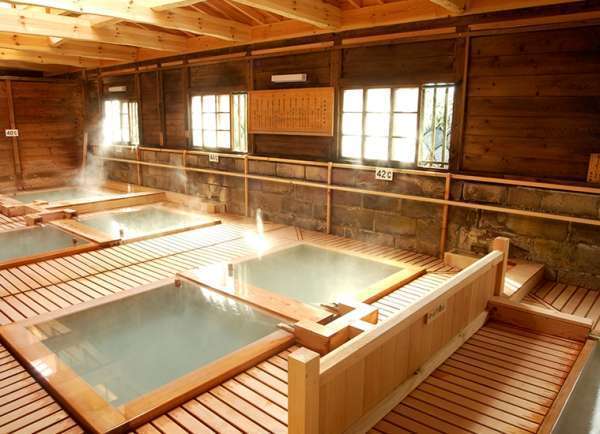
Located just below the famous Nasu landmark of Sesshoseki (Killing Stone), Shika-no-Yu is a communal bath without any accommodations. First opening in the first half of the 7th century, it has a 1300-year history. It has been recorded in the ancient chronicles that it had been visited by nobility in the Nara Era, and even in the Edo Era, it gained popularity as feudal lords from everywhere in the country came to the hot spring. It is known as a touji which refers to a bath used for medicinal effects and so its waters have been used to cure illness and injury. Long ago, it was said that an injured deer went into the waters and recovered which gave the onsen its name.
Since it has long had the feeling of a spa, the onsen is not a place to wash yourself so soap and shampoo cannot be used. It is simply an onsen to calm body and mind. The wooden-floored facility is divided into 6 baths for men and 5 baths for women, and each bath has its own different temperature. The kaburi-yu method is recommended as an effective bathing method. It’s a method that is quite rare in Japan but it involves ladling water over your head…200 times for adults, 100 times for children. It is ideal for ailments such as hot flashes, headaches and stiff shoulders. You can select baths from a range of temperatures from 41 to 48 degrees C (for women, the upper limit is 46 degrees). Repeat the process of soaking for 3 minutes and rest, so over a day, you can get into the bath 4 times for a total time of 15 minutes. Shika-no-Yu is also effective for overall recovery from exhaustion and promotion of health. Each of the 7 hot springs of Nasu have their own different types of water and functions so you can enjoy touring the various onsen. But since the bathrooms are not all that big, you will want to visit during the relatively quiet times such as on weekday mornings to take that leisurely soak.
Admission: Adult: ¥ 400 / Child: ¥ 300
- Guidebook from Planetyze about Shika-no-Yu
- Reviews from TripAdvisor about Shika-no-Yu
- Tours of Shika-no-Yu
4. Ryuokyo Gorge

Ryuokyo is located between Kinugawa Onsen and Kawaji Onsen. A gorge whose volcanic rock was eroded over its 3 km, its steep exposed bedrock evokes a violent dragon. Ryokyo is basically divided into 3 sections. The upstream Shiryu Ravine is notable for the purple rocks that flowed out during the early volcanic activity. The midstream Seiryu Ravine accumulated volcanic ash that changed the color of the rocks blue. And the downstream Hakuryu Ravine has rocks on either side of the stream that were formed from white volcanic rock. Visitors will never tire of the beauty of this gorge filled with changing scenery.
The entrance to Ryuokyo starts from Hakuryu Ravine to the open-air bath at Kawaji Onsen over a distance of 6km on a gentle nature trail that takes 3 hours to cover, so that many people visit during the spring and fall seasons. There are 4 types of courses which include a 1.5-hour course that loops back from the most popular spot of Musasabi Bridge and a 3-hour course that goes beyond Ryuokyo to Kawaji Onsen. You will want to choose the course that best meets your stamina and time.
There are picturesque spots such as Nijimi Bridge at the southern entrance for the courses where you can view a rainbow on a good day at Nijimi Falls, Goryuo Shrine where you can yell out to get your wish, and the rough Hakuryu Ravine. It’s almost like taking in the beauty of a Japanese painting. Musasabi Bridge has the most incredible panorama in Ryuokyo Gorge. Just on the borderline between Hakuryu and Seiryu Ravines, you can view the changes in scenery upstream and downstream. It’s also fun to take that stroll as you search for the nature-created art works such as Sokonashi Marsh where the nationally-designated Natural Monument of the forest tree green frog lives, the kame-ana potholes where rocks have fallen and shaped the ground through the actions of water, and the skunk cabbage wetlands.
Admission: Free
- Guidebook from Planetyze about Ryuokyo Gorge
- Reviews from TripAdvisor about Ryuokyo Gorge
- Tours of Ryuokyo Gorge
5. Ryuuka (Changing Dragon) Falls

Nasu-Shiobara is located at the northern end of Tochigi Prefecture. Ryuuka Falls is in the Shiobara Gorge which has the picturesque nature of Nikko National Park and onsen rich with hot spring water. Among the 100 or so waterfalls in the area, there are the especially beautiful 10 Major Waterfalls of Shiobara of which Ryuuka is at the top of the list. At a total length of 130m, making it the longest waterfall, the sight of the huge quantities of water being squeezed down through the 3 levels of precipitous rock is a spectacle that seems to be rushing right at you. The surrounding rock is black and rough and after being carved over many, many years, it further brings out the white waterfall so that you can feel the vibrancy of the great land. There is an observation platform set up directly below the waterfall so that you can view it at a close distance. Please be aware that after a heavy rain, the amount of water coming down will be enough to drench your clothes.
There is a nature trail that begins from the parking lot along the national highway. Although the trail which takes 40 minutes for a round trip has a lot of undulations, it is not a difficult road and is very easy to traverse. Ryuuka Falls is the terminus for the trail but there are other waterfalls along the way. From the entrance to Ryuuka, there is Nuno Falls which overlooks the Hokigawa River. And just ahead, there is Fukyo Falls which has a drop of 10m. From the suspension bridge, you can also observe rock wall formations known as columnar joints (developed column-shaped fissures inside the rock). The season of fresh greenery is a fine time but the trail is especially beautiful during autumn due to the many maple trees in the area. There is another waterfall nearby which is also one of the 10 Major Waterfalls of Shiobara, Mikaeri Falls along with the Momiji Gorge Suspension Bridge, so that you can enjoy the beauty of Shiobara Gorge to your heart’s content.
Admission: Free
- Guidebook from Planetyze about Ryuuka Falls
- Reviews from TripAdvisor about Ryuuka Falls
- Tours of Ryuuka Falls
6. Tobu World Square
Located next to Nikko Kinugawa Onsen. The models within Tobu World Square are 1/25 scale, but you will be surprised at how exceptionally big they actually are. For instance, there is the 634mTokyo Sky Tree whose model measures 25.36m which is the equivalent of a 7-story building. Being able to see buildings from overhead, you will end up gazing at these structures in detail from various angles such as Kyoto’s Kiyomizu-dera Temple which can’t actually be seen from the left.
There are 140,000 residents within the park that are only 7cm high. Intricately and individually created down to the last detail, there are even famous people scattered all around. “Roman Holiday” is being filmed at the Duomi di Milano, and the Buddhist monk Xuanzang can be found at the Great Wall of China. Also, you can come across Batman and Marilyn Monroe and other unique characters. One way to enjoy your time is walking through the square and searching for those famous folks among the buildings which could almost be forgotten for the real thing.
The opening times are extended annually between November and March, and about 1.4 million red and blue lights gorgeously illuminate the grounds. Beginning with Tokyo Sky Tree, buildings such as the Eiffel Tower and the Duomi di Milano and the surrounding area are wondrously lit up with LEDs and spotlights. The 100m leading up to Alpine Roses Park continues the wonder with a light tunnel. You can also enjoy the performance of a variety of lights for the fall foliage and the snowscapes of winter.
Admission: Adult: ¥ 2,500 / Child: ¥ 1,200
- Guidebook from Planetyze about Tobu World Square
- Reviews from TripAdvisor about Tobu World Square
- Tours of Tobu World Square
7. Oya History Museum
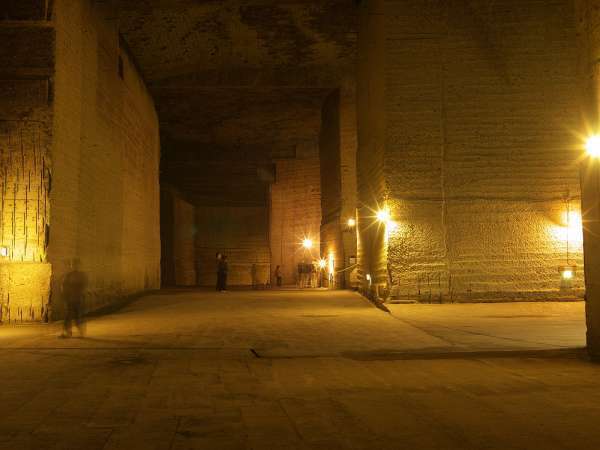
This area of amassed rock was called Oya Rock and was used to help in the building of the Imperial Hotel. The large-scale endeavor of continuous excavation that has gone on for decades has very few similar examples in the world. The underground excavation that is open to the public took a little under 70 years to complete, from 1919 to 1986 with the area going down 30 meters and covering a huge underground space of 20000㎡. During the war, it was used as an underground secret base and after the war, it was a storehouse. As you head down the long stairs of Oya Rock and reach the quarry, a spectacle will spread out in front of your eyes that is a wondrous space that cannot be imagined in Japan. Within the dim quarry, there is flickering light and red and blue illumination effectively placed everywhere which feels as if you’ve ended up in some movie. The walls have marks from pickaxes when they were used during the days of manual digging, so you can feel the gravity of history. The average temperature of the underground cavern is 8 degrees. A cool environment is maintained so the museum is great to visit during the heat of summer. Also, the space is used for a wide variety of events such as concerts, art exhibitions, performance stages and studios. Although it isn’t open very often, there is also a church provided so weddings can be held.
There is a bus which runs from Utsunomiya Station to the museum, but if you can spare the time, you will want to get off at Oya Hashi Bus Stop and take a walk around. There are many sights to see such as the 27m-high hand-carved Peace Kannon, the nationally-designated Important Cultural Property of the Thousand-Armed Kannon at Oya-ji Temple, and the especially beautiful rock walls along the river at Oya Keikan Park.
Admission: Adult: ¥ 700 / Child: ¥ 350
- Guidebook from Planetyze about Oya History Museum
- Reviews from TripAdvisor about Oya History Museum
- Tours of Oya History Museum
8. Nasu Animal Kingdom
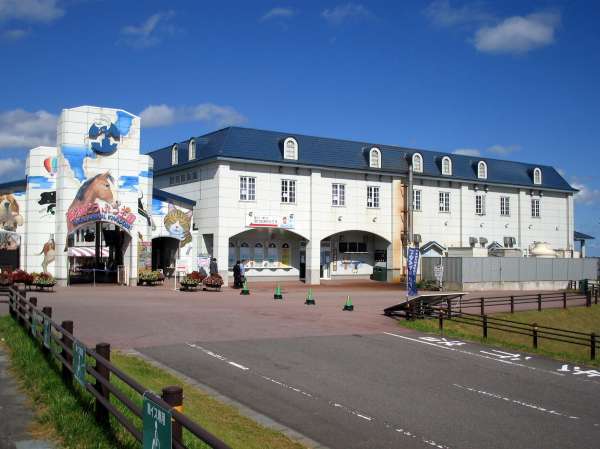
Just 2 hours away from Tokyo by car. There is a free shuttle bus service from Nasu-Shiobara Station if you are coming by train so you can still enjoy the zoo even on a day trip. The huge 43ha grounds are divided into the Kingdom Town and the Kingdom Farm. Kingdom Town is an indoor facility that centers on the many animals that you can encounter. At Capybara Forest, more than 20 capybaras run around freely which you can feed and interact with. At the Bamboo Forest Lesser House, where the cutest lesser pandas live, you can feed apples to the pandas. This is also a very popular place. Then, there is Kingdom Farm which spreads out through the grand nature of Nasu. The most popular part of the farm is the Bird Performance Show. The flight and hunting poses of birds of prey such as eagles and owls can be seen, among which is the spectacular and large Bald Eagle with a wingspan of 2 meters. Also, within this magnificent scenery, you can encounter alpacas, horses and sheep, and even experience horseback riding.
There is an onsen, Nasu Gohou-no-Yu, within the grounds which is just half-price for zoo visitors. In the winter, there is the adjacent ski resort, Mount Jeans Ski Resort Nasu with nap rooms so that you can enjoy skiing and the zoo over the day. In addition, in 2014, the Penguin Village was re-opened. It has Japan’s only display of puffins which have a cuteness to rival that of penguins. You can also feed the penguins and the eared seals. Since it is hard to cover the whole zoo in one day, check the time schedule beforehand and map out your tour efficiently.
Admission: Adult: ¥ 2,000 / Child: ¥ 1,000
- Guidebook from Planetyze about Nasu Animal Kingdom
- Reviews from TripAdvisor about Nasu Animal Kingdom
- Tours of Nasu Animal Kingdom
9. Furumine Shrine
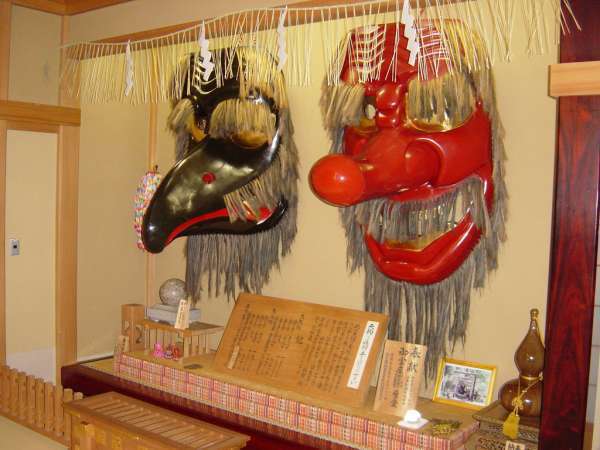
Next to Nikko, the huge 500ha Furumine Shrine in Furuminegahara of Kanuma City is dedicated to the hero of Japanese mythology Yamatotakeru whose messengers in the form of long-nosed goblins known as tengu have been greatly worshiped. The tengu possess strange powers and are worshiped on the same level as gods. In the large room of the front shrine (haiden), there are 2 tengu masks with a length of 1.5m. Created from hollowing out a giant tree, they were offered over 400 years ago, and have a fierce enough countenance so that children are afraid to approach them. There are over 200 tengu masks in the shaden to make the place seem like an inn for tengu. Also, the letter bearing the vermilion seal of the shogun at the same shrine is wonderful. It is a unique letter whose tengu drawing was actually created by Shinto priests, and on an average day, up to 200 people come and visit. With more than 10 kinds of dynamic letters on the two facing pages, these are especially popular with the enthusiasts.
There are also accommodations at the shrine. Since there is a guesthouse at the shrine, the food is not vegetarian and even alcohol can be imbibed. There are a variety of rooms ranging from a large space to private rooms, and there is a cleanliness that spreads to every corner. Within the solemn atmosphere of the morning prayers at 7 a.m., events such as gagaku music performances and exorcisms are held. The Furumine-en Garden within the shrine has an area of 82500㎡ which is the largest one in Japan for Japanese gardens built since the Showa Era. Many people who have an interest in gardens visit Furumine-en which was created to enliven the wide natural topography, drawing in the waters of the Oashikawa River.
You will want to drop by the Jinzen Tomoe-no-Shuku which is 10 minutes away from Furumine Shrine by car and has been designated as a Prefectural Important Cultural Property. The training ground of Shodo Shonin who had opened Nikko, the quietly standing shrine and the sacred tree provide a mysterious atmosphere beyond the torii gate.
Admission: Free
- Guidebook from Planetyze about Furumine Shrine
- Reviews from TripAdvisor about Furumine Shrine
- Tours of Furumine Shrine
10. Nasu Alpaca Farm

The homeland of the alpaca is the 3000m highlands of the Andes Mountains in South America. With the Nasu Highlands sharing the same climate close to Tokyo, Japan’s first alpaca breeding farm was started there in 1999. The 200 original alpacas which came over from Chile have now grown to 400. The Peru Alpaca & Llama Breeders’ Organization (known as SPAR) has recognized the facility as “the farm raising the world’s friendliest alpacas”. Due to a 2008 Japanese commercial which used an alpaca, the animal became an overnight sensation. What is truly adorable is that it will come over to you if you call to it.
People who have seen alpacas have said in unison that they are healing because of their large watery eyes and the corners of their mouths that seem to curl up in a smile. With their eyes large enough to make easy eye contact with humans, fluffy fur and amiable personality, you end up smiling in spite of yourself. Shearing season is from the latter part of May to June. Since they have slender bodies in summer, you will have to visit at another time of year to witness their soft fur.
There are two areas where you can freely meet the alpacas. At the Petting Area, you can touch and feed them, and you can take a souvenir photo with Kurare-chan, the alpaca which became famous on that commercial (limited to weekends). The Strolling Area is popular for being able to walk with baby alpacas and taking souvenir photos. The leashes can only be held by junior high school students and above, but even little children can touch the alpacas. However, it should be warned that when the alpacas are scared or when they are scrambling for food, they have a tendency to spit.
Admission: Adult: ¥ 800 / Child: ¥ 400
- Guidebook from Planetyze about Nasu Alpaca Farm
- Reviews from TripAdvisor about Nasu Alpaca Farm
- Tours of Nasu Alpaca Farm
Have the best experience in Tochigi you can.
Travel to a foreign country is hard.
Lot of things to do in a short period of time.
Lot of things to discovered, to know and to be surprised.
A different to language to do all the daily things and more.
The weight of regreting to visit a place instead of other or getting lost and also lost the day.
Surprises about the time required to visit a place.
You will want to have someone that knows the place to help you.
For this, we recommend you to hire a private guide from GoWithGuide.
He will help you with all these problems and also will make the trip in your own way.
You can go at the places that better fits your interest and also make it in your own time because all the tours are private and customized.
And also, with trustful and professionals guides because all of them are selected by our team for being well-capable.
So, you might be thinking, okay, it will be probably cost a lot.
No. The price is affordable and certainly worths the value since you have sent a lot to go other country and want to make the most of it.
You can hire private guides and talk with him to make it according to your own interests or join a tour and customize it.
Check some recommended tours that we selected for you.
Recommended tours
Pottery Village Mashiko (Hamada Shoji's ware) Museum, Cafe and Laughing King of Hell Statue
One day trip to Ashikaga - Ashikaga Flower Park
Nasu Heisei-no-mori Forest walk and Nasu Highland
Or, if you want to explore outside Oita:
Tokyo Must-See Places As-You-Like One-Day Tour
1-day special customized tour in Kyoto
Two World Heritage Sites in Hiroshima
Blogs about Tochigi
4 Beautiful Tochigi Nature Spots
Summer Fireworks Festivals in Kanagawa, Chiba, Saitama, Tochigi, Shizuoka 2014
